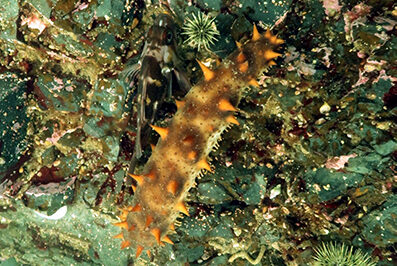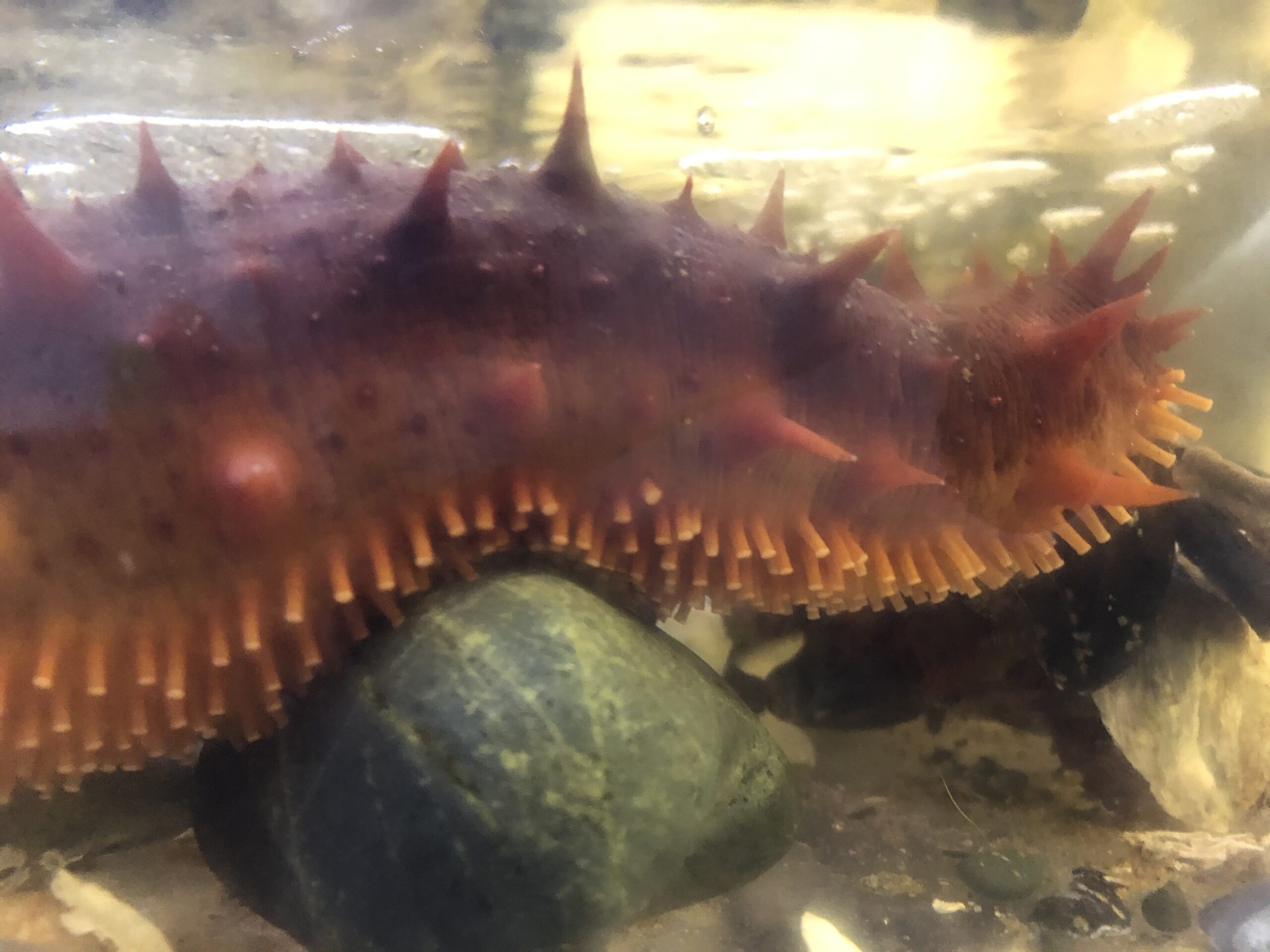California Sea Cucumber (Parastichopus californicus)

California sea cucumbers are the largest species of sea cucumber found in the Pacific Northwest, growing up to 50cm in length. They can have great variation in their colouring but are most commonly red, brown, and yellow. Their body is covered in stubby spikes that are lighter in colour than the rest of the body. Tentacles form a ring around their mouth, mopping up food particles. Along the underside of their bodies they have small tube feet, which they use for locomotion. California sea cucumbers are deposit feeders, consuming mostly decaying matter and detritus.

California sea cucumbers are found from central Alaska all the way down to northern Mexico and from the intertidal zone down to 250 m depth. They prefer areas with hard substrate such as rocks and shells, and areas of calm water. California sea cucumbers can live up to twelve years and begin reproducing at between four and eight years old. They are broadcast spawners, meaning they release gametes directly into the water for fertilization. California sea cucumbers time their spawnings to coincide with annual phytoplankton blooms.
California sea cucumbers are soft bodied organisms with very reduced skeletons. To help maintain their shape they have small ossicles (hard calcareous structures) in their tissue as well as five bands of longitudinal muscle. When stressed they can contract the bands of muscles to writhe around and escape predators. As a last resort sea cucumbers will evert their internal organs and expel them to confuse their predators and allow them to escape. Predators of California sea cucumbers are sea stars, fish, sea otters and crabs.
To learn more check out our Seaquaria video about Sea Cucumbers. Sea Cucumbers are a common resident in our summer touch tanks!
For more information visit Sea Grant or Biodiversity of the Central Coast


